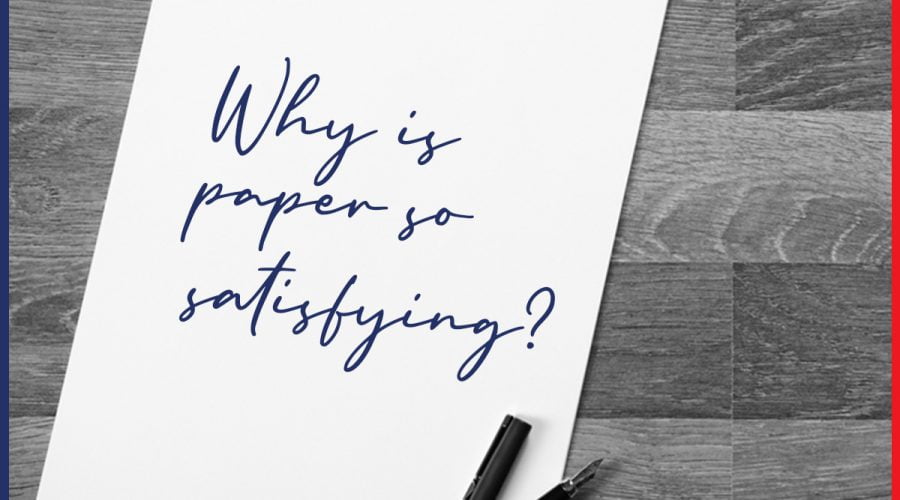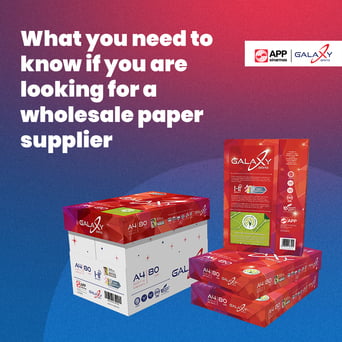Why is Paper So Satisfying?
There is something about paper that makes our brain so happy!
Did you know? The quality paper makes an impact on each one of us, even when we don’t realise it. It is because the human brain seeks sensory experiences. In fact, more than half of the brain is dedicated to receiving multiple sensory experiences. Paper manages to appeal to so many parts of our brain at the same time. No wonder we all find paper so satisfying, even if it is deep within!
When put on paper, the texture, colour and finish come together to speak to you. Communication becomes something beautiful, beyond the written or printed words, which is why we tend to pay more attention and understand better when we read off paper. While digital means to read stand the risk of proving a sensory overload or a plethora of distractions, the paper is soothing to almost all your senses at once.
Touch
Think about the last time you were at a restaurant and a menu was handed to you. Did it say something about the quality of the restaurant itself, didn’t it? It was clearly the beginning of an experience that heightened your opinion of the brand itself, made you comfortable in the ambience and like the food more. Now imagine that everything else was exactly the same, but the menu was printed on a flimsy piece of paper torn at the corners. You probably wouldn’t even order your meal after laying your hands on that menu!
People find the need to touch things without realising it. Touching something makes it real and a part of the environment. Touch comes naturally to us. In an era of continuous digitization, the paper introduces a more rustic touch that appeals better to the senses.
Think of the last wedding invitation card you received. The quality of the card spoke to you and created an image of the wedding in your head. You possibly anticipated the dishes that were going to be served at the wedding banquet. You probably guessed the kind of venue even before looking at it. You couldn’t do the same with a digital invitation, even if you tried.
That is the power of touch. It creates a sense of ownership of the object, which lets your brain connect and analyse anything better. Something you can touch bestows upon you a sense of value and trustworthiness. Something you can trust creates a more satisfying experience.
Sight
Colour on paper is received better by us than the colour on the screen. Colours are more dramatic and appealing on printed material than it is on a digital screen. While screens emit coloured rays of light directly into your eyes, the paper reflects light from your surroundings to create a more soothing and realistic viewing experience.
Because paper is easier on the eyes, it lets you read for longer without straining you. It is also easier for you to focus and read every line, every word more carefully when you read on paper. Don’t believe it? Observe how you tend to glance through keywords the next time you read an email on your desktop or a celebrity gossip news piece on your smartphone. You are likely to catch yourself urging to scroll down faster too. Viewing on screen makes you restless. Paper, on the other hand, lets you take your own sweet time.
Printed material that has the right colours can hold your attention more easily and help retain information for longer. While not all of us are blessed with an eidetic memory, we do find ourselves recalling something we read on a piece of paper more easily in the eyes of our minds.
Smell
The smell of fresh ink on paper or a new book is so satisfying to our senses. Biblichor, or the smell exuded by old books, is something digital screens can never recreate! We absolutely love you if you love the raw pulpy odour of mill-made paper, fresh out of a ream.
Paper has an earthy smell associated with it that adds to the reading, writing or viewing experience. It comes from organic material, such as cellulose from wood pulp reacting to sunlight, air and everything around to create volatile complex compounds. The smell gets stronger over time depending on the chemicals used to process the paper.
Although our acid-free paper lasts longer, it doesn’t hinder with the pleasant olfactory experience paper is supposed to naturally create. Flip through a pile of printed sheets to feel satisfied, just the same.
Aesthetics
Paper makes everything look and feel better. No, we aren’t just talking about what’s printed on paper and what you feel when you look at it. Paper has a sophisticated aesthetic value.
A library of physical books is a great place to hang out at, even for non-readers. Watch yourself closely when you are around books or just a stack of printed papers. Your hands unconsciously reach out and your eyes focus all your attention on it as your fingers begin to flip through pages, even if you don’t intend to read. Paper is so pleasing that it grabs and holds your attention.
Gifting someone a real book feels more valuable than gifting an e-book that costs the same. A personal library, no matter how small, becomes a conversation starter. On the other hand, you might have difficulty in even bringing up the topic of an e-book that you recently read.
Waiting rooms are equipped with exquisite magazines on a coffee table. Have you wondered why your dentist or hairstylist still subscribes to those expensive magazines instead of placing a couple of tablets connected to the internet that lets you browse through anything you want? For starters, those magazines add subtle elegance to the waiting room’s decor. More importantly, you are likely to spend time flipping pages through a magazine more patiently as you wait.
We spend a lot of our time staring at digital screens today. Paper comes as a breath of fresh air. The way paper looks, smells and feels leaves a lasting impact on you. Choose to experience the satisfying effects, among numerous other benefits paper offers. It could uplift your mood or make your life!



